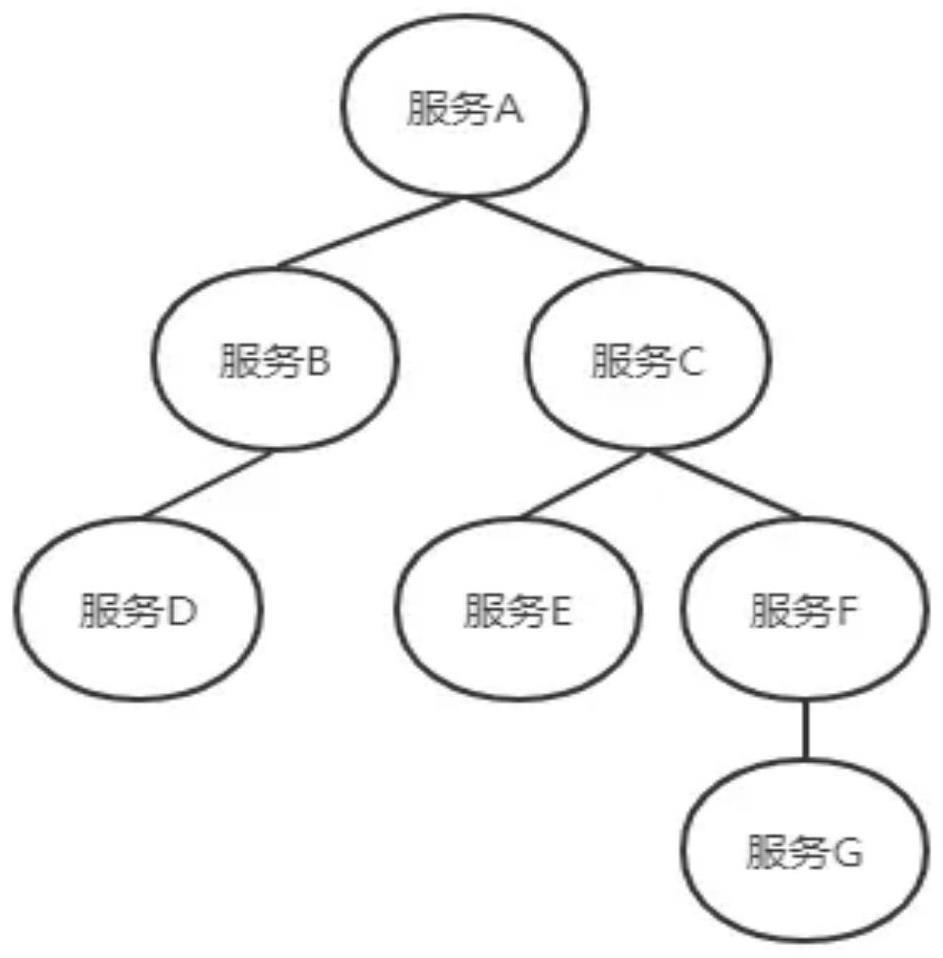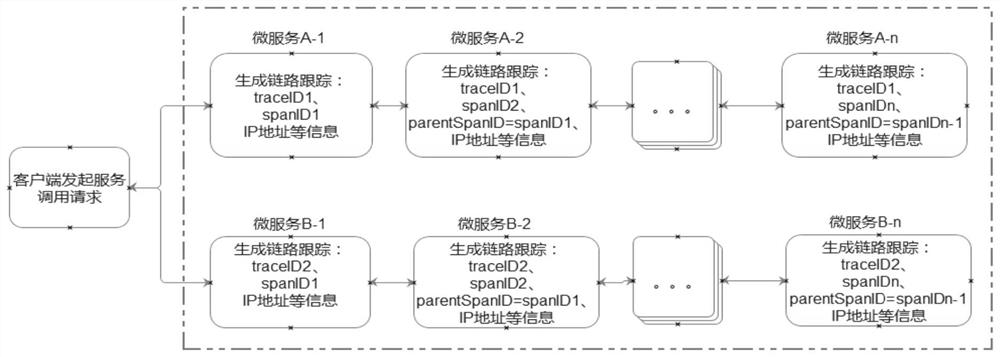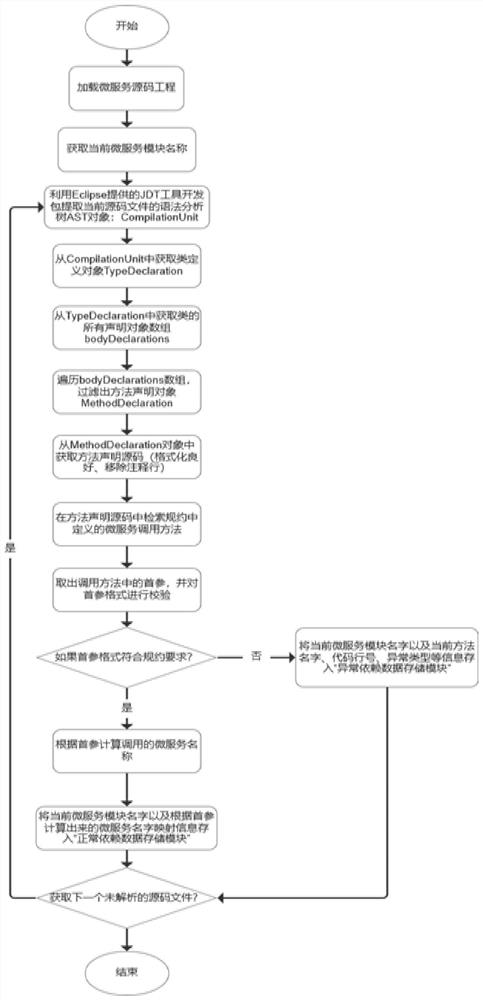Micro-service dependency link static analysis method and system based on syntactic analysis tree
A grammatical analysis and static analysis technology, applied in the direction of program code conversion, instrumentation, electrical digital data processing, etc., can solve the problems of increased communication and management costs, high time and labor costs for obtaining call link information, and lack of dependencies. Achieve the effect of improving the efficiency and level of information management, improving the efficiency of development and testing, and ensuring the quality of development
- Summary
- Abstract
- Description
- Claims
- Application Information
AI Technical Summary
Problems solved by technology
Method used
Image
Examples
Embodiment 1
[0055] The microservice architecture pattern divides a traditional single application program into a group of independent and small service modules. The service modules coordinate and cooperate with each other, and the services use a lightweight communication mechanism to cooperate with each other (usually based on the HTTP protocol. RESTful API). Each service module is built around the most suitable technology stack for a specific business, and can be independently deployed into a production environment. As the business requirements of the system become more and more complex, large-scale information systems designed using the microservice architecture may have dozens or even hundreds of microservices supporting them in the background for seemingly simple business scenarios. The more, the more complex the call link dependencies between services under this distributed service architecture, such as figure 1 shown.
[0056] The dependency link information between microservices ...
Embodiment 2
[0110] like Figure 7 As shown, this embodiment proposes a static analysis system for microservice dependency links based on a syntax analysis tree, including:
[0111] The microservice coding protocol module is configured to code the microservice calls;
[0112] The first source code analysis module is configured to convert the current microservice source code file into a syntax analysis tree object;
[0113] The second source code analysis module is configured to obtain a class definition object according to the syntax analysis tree object, obtain a class declaration object array according to the class definition object, traverse the declaration object array, and obtain a method declaration object;
[0114] The third source code analysis module is configured to obtain the method declaration source code according to the method declaration object, and retrieve the microservice calling method defined in the specification from the method declaration source code;
[0115] The d...
PUM
 Login to View More
Login to View More Abstract
Description
Claims
Application Information
 Login to View More
Login to View More - Generate Ideas
- Intellectual Property
- Life Sciences
- Materials
- Tech Scout
- Unparalleled Data Quality
- Higher Quality Content
- 60% Fewer Hallucinations
Browse by: Latest US Patents, China's latest patents, Technical Efficacy Thesaurus, Application Domain, Technology Topic, Popular Technical Reports.
© 2025 PatSnap. All rights reserved.Legal|Privacy policy|Modern Slavery Act Transparency Statement|Sitemap|About US| Contact US: help@patsnap.com



